-
CATEGORY ::
- All Seeds /
- All Flower Seeds /
- All Bee Balm Seeds
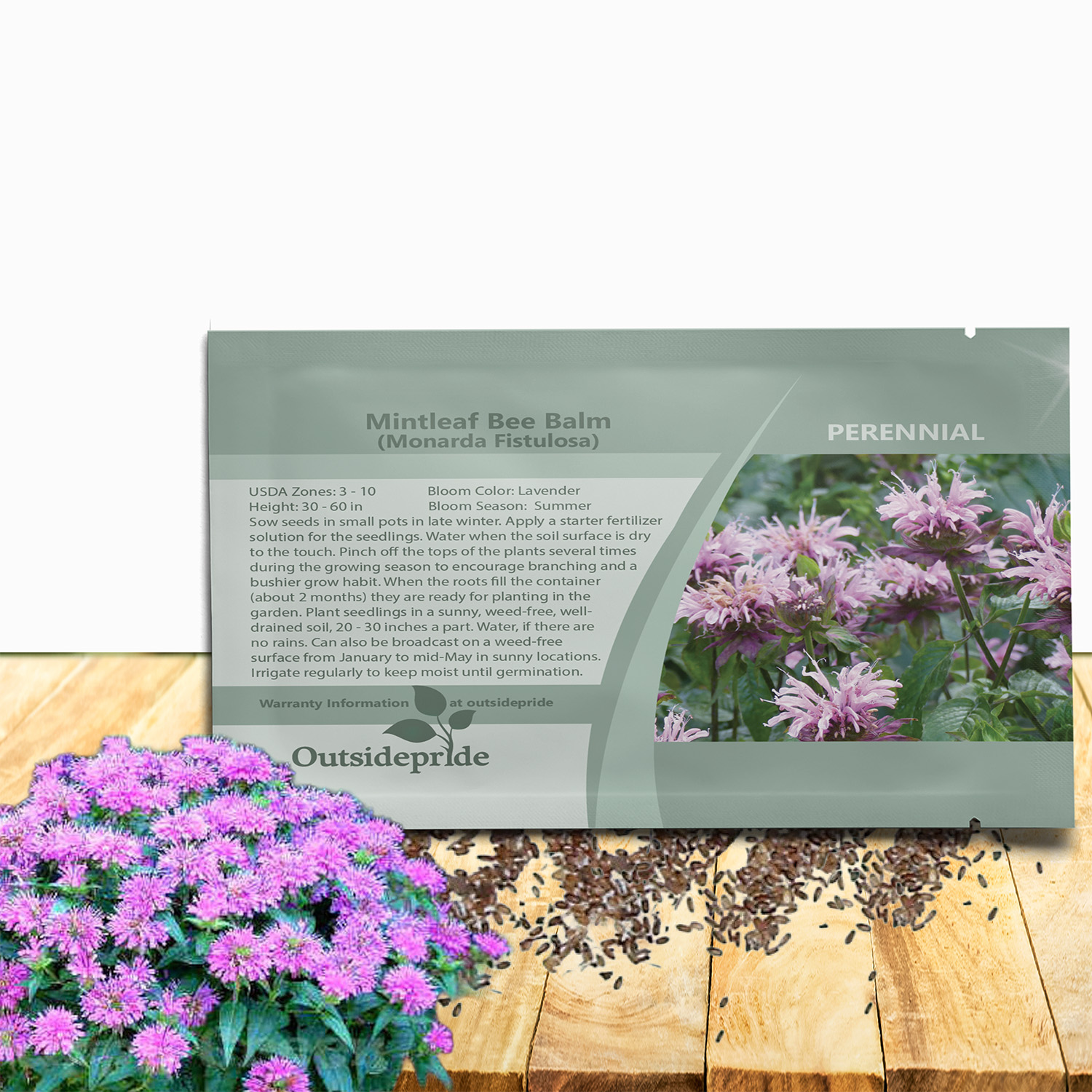

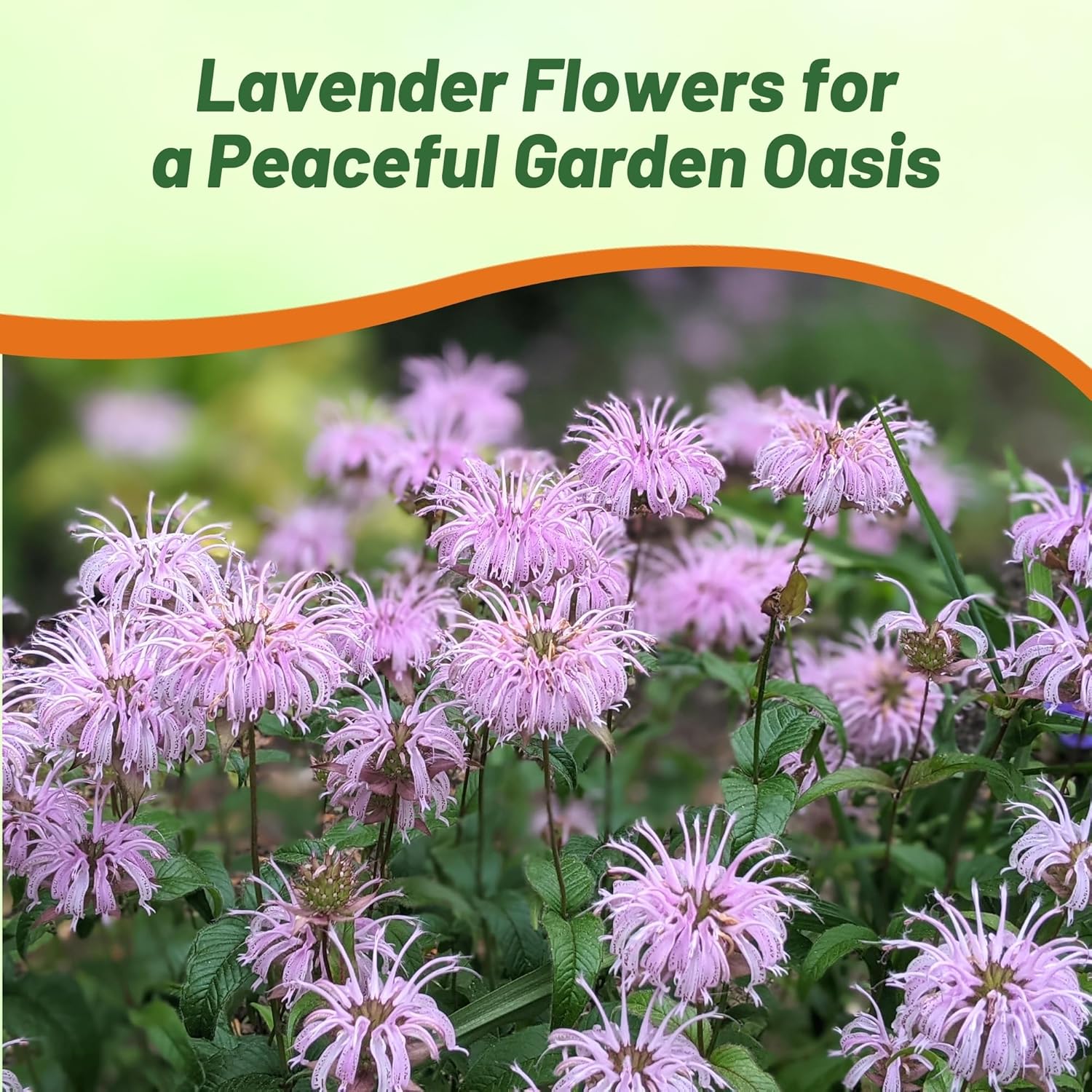
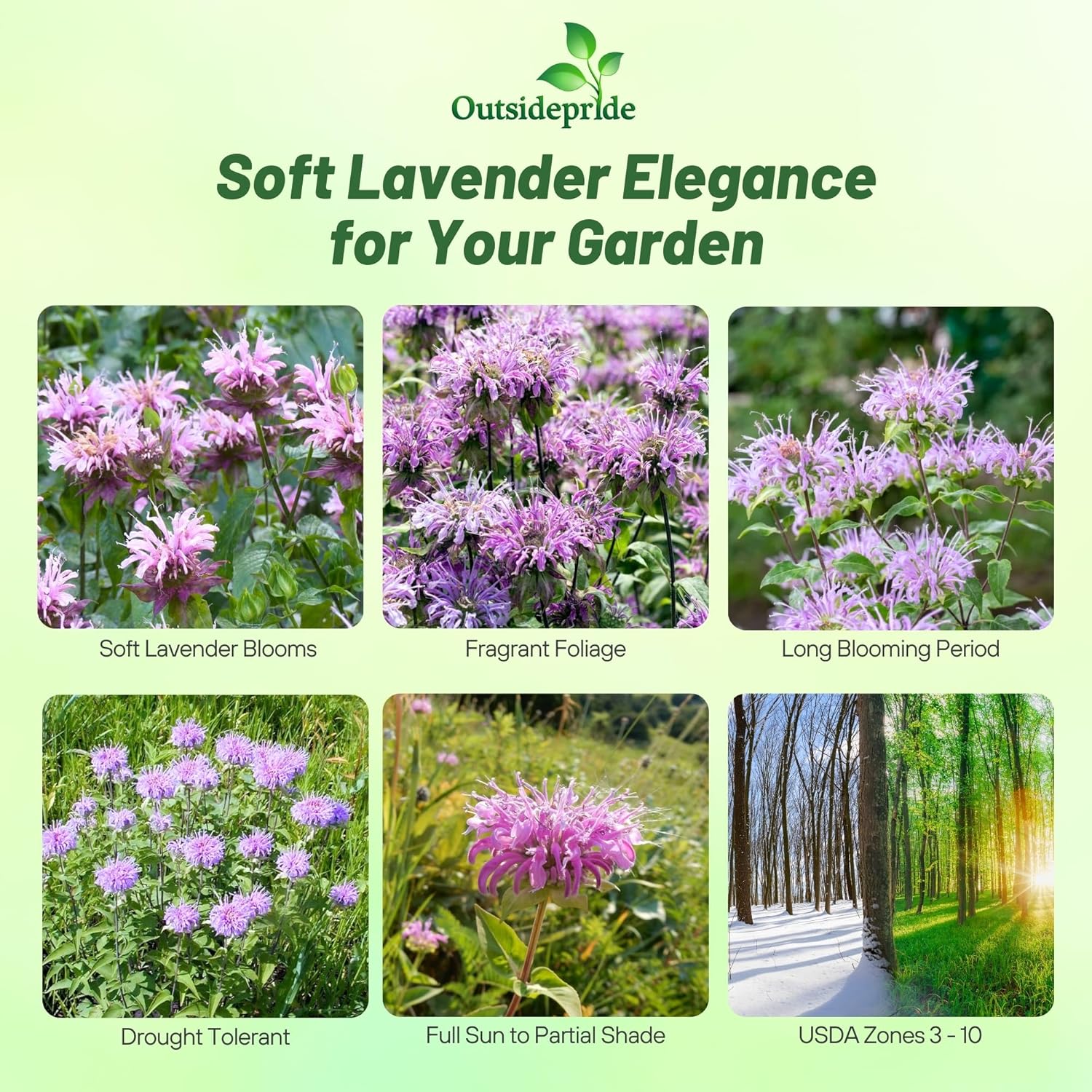
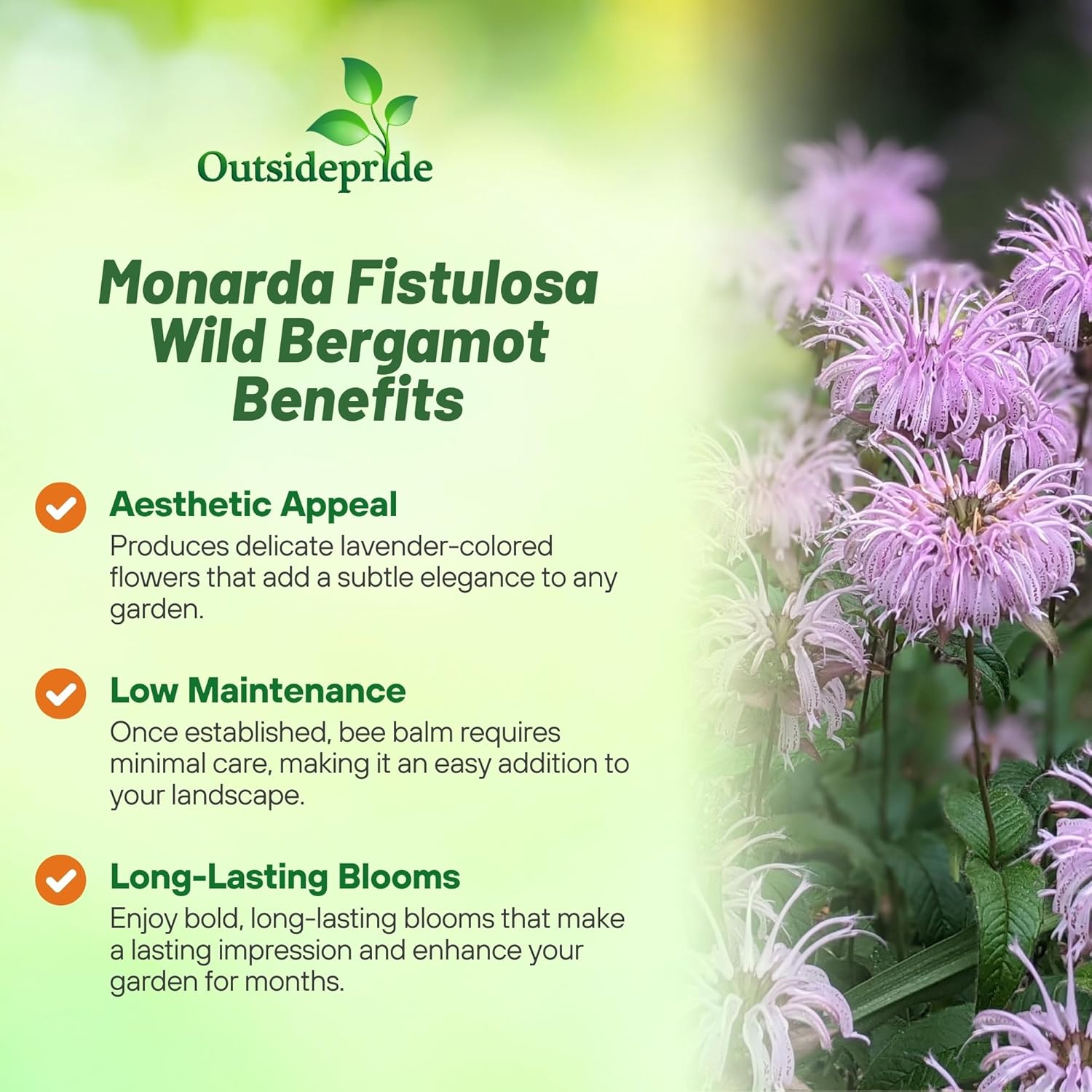
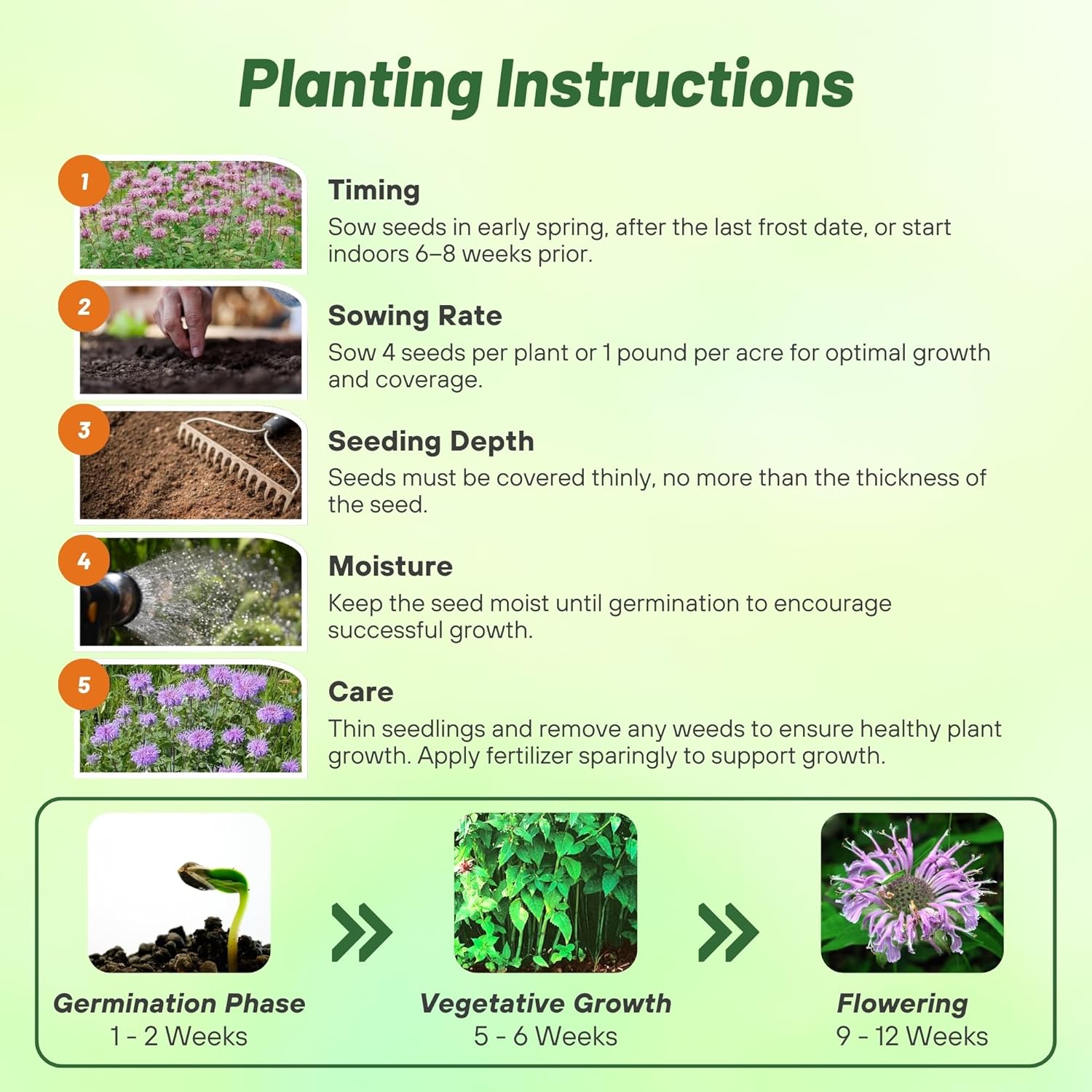
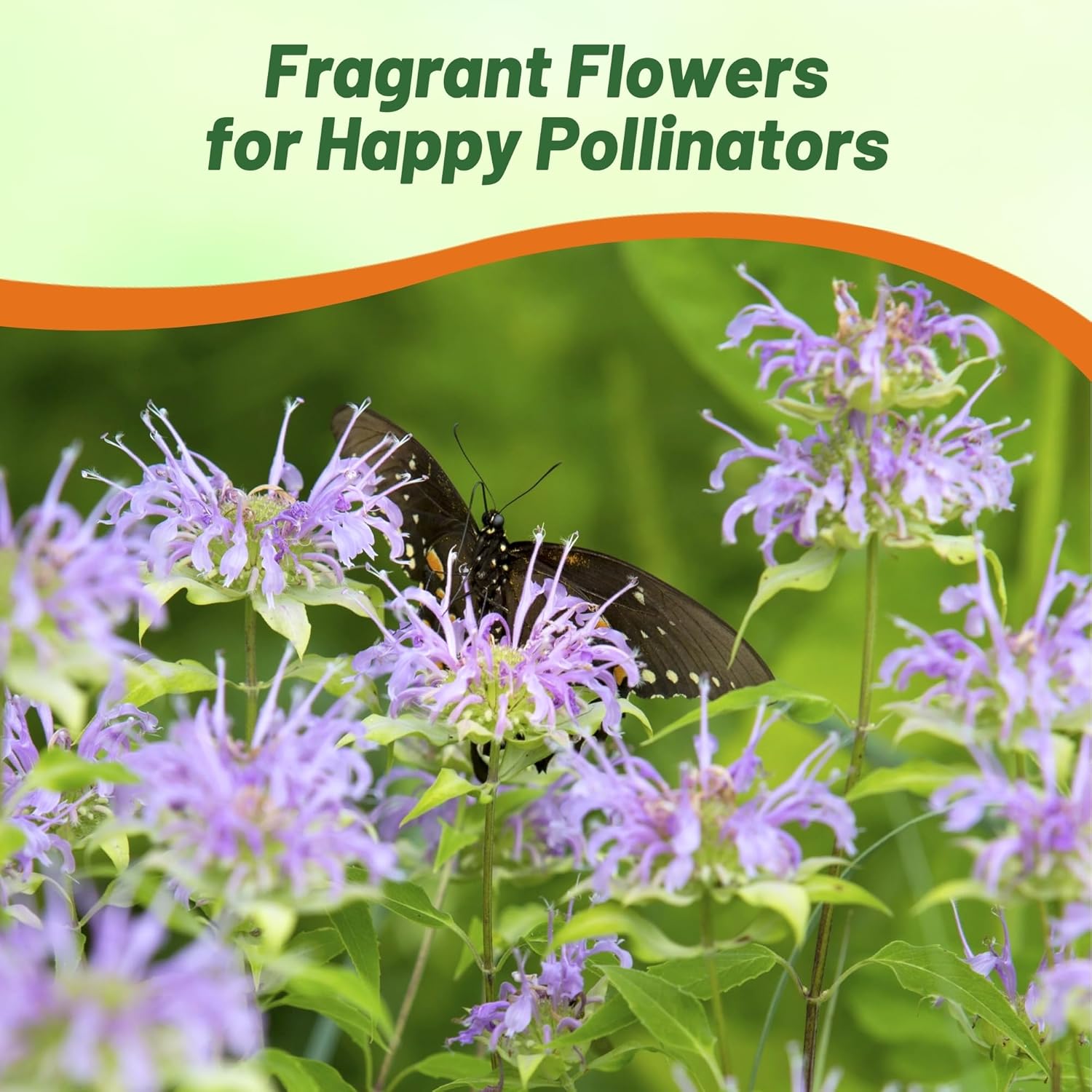

Monarda Fistulosa Seeds - Wild Bergamot
SEASON
Perennial
USDA ZONES
4 - 9
HEIGHT
36 inches
BLOOM SEASON
Summer
BLOOM COLOR
Red
ENVIRONMENT
Full sun to partial shade
SOIL TYPE
Well-drained, pH 6.1 - 7.3
DEER RESISTANT
Yes
About...
Wild Bergamot (Monarda Fistulosa) - Grow Monarda Fistulosa seeds for this attractive and useful perennial plant. Also known as Mintleaf Beebalm this perennial is an upright growing plant which spreads out. It has a lovely lavender blossom and distinctively aromatic foliage.
MORE BEE BALM OPTIONS
Planting Directions
TEMPERATURE
68F
AVERAGE GERM TIME
14 - 28 days
LIGHT REQUIRED
Yes
DEPTH
Seeds must be covered thinly, no more than the thickness of the seed
SOWING RATE
4 seeds per plant or 1 pound per acre
MOISTURE
Keep seed moist until germination
PLANT SPACING
20 - 30 inches
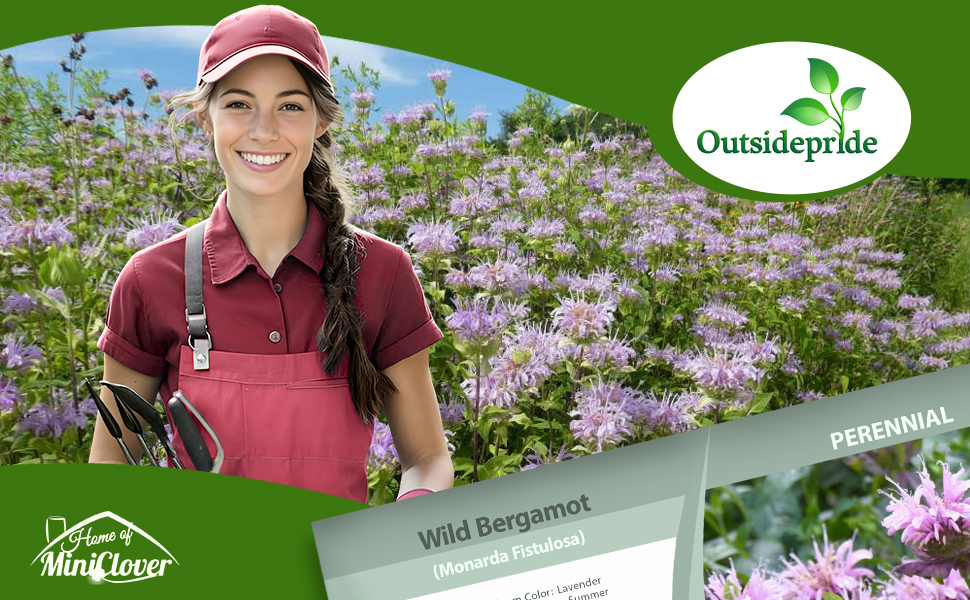
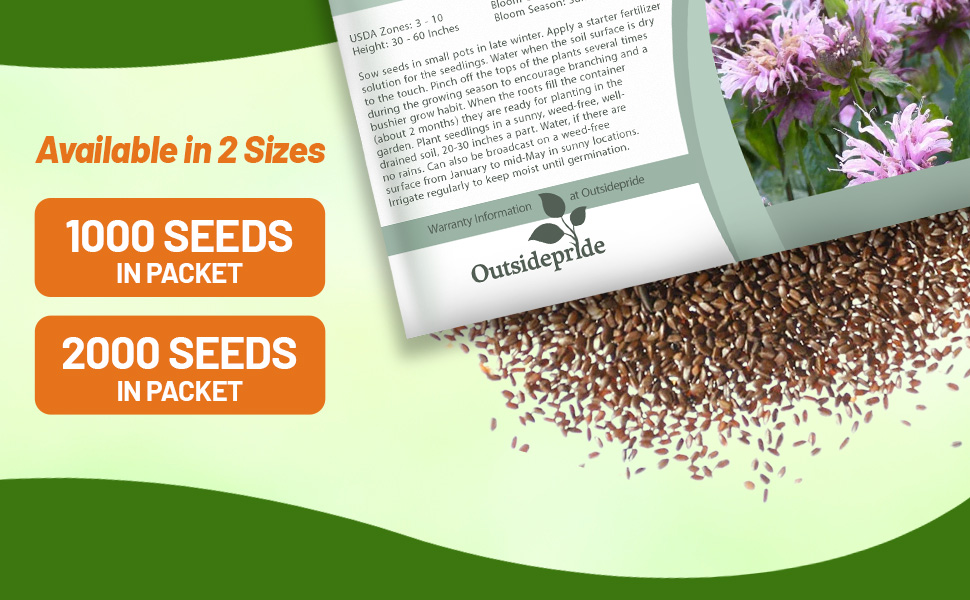
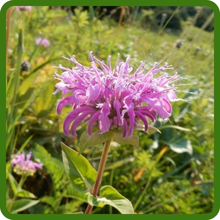

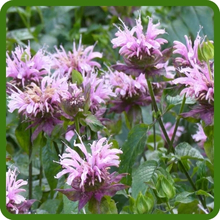

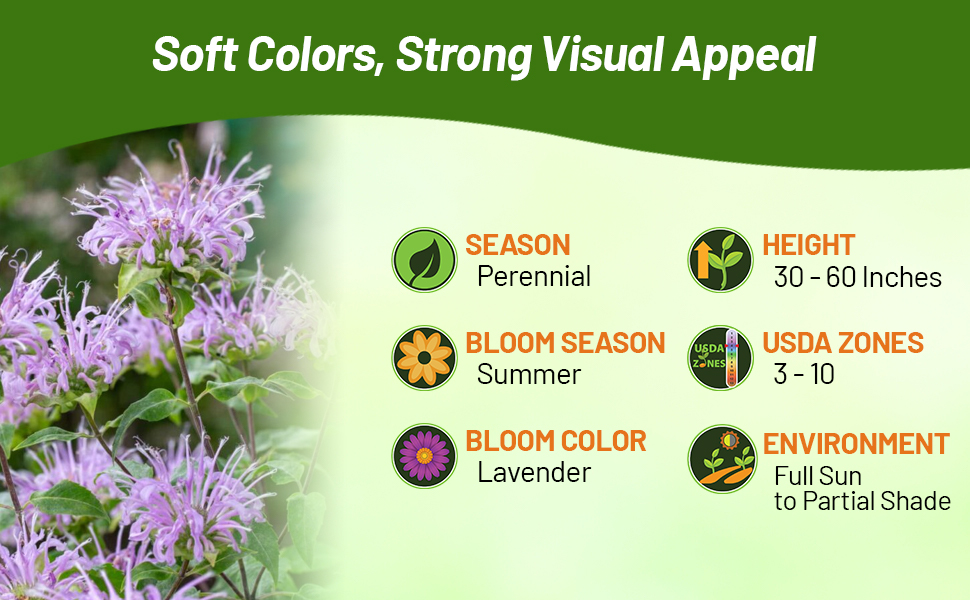
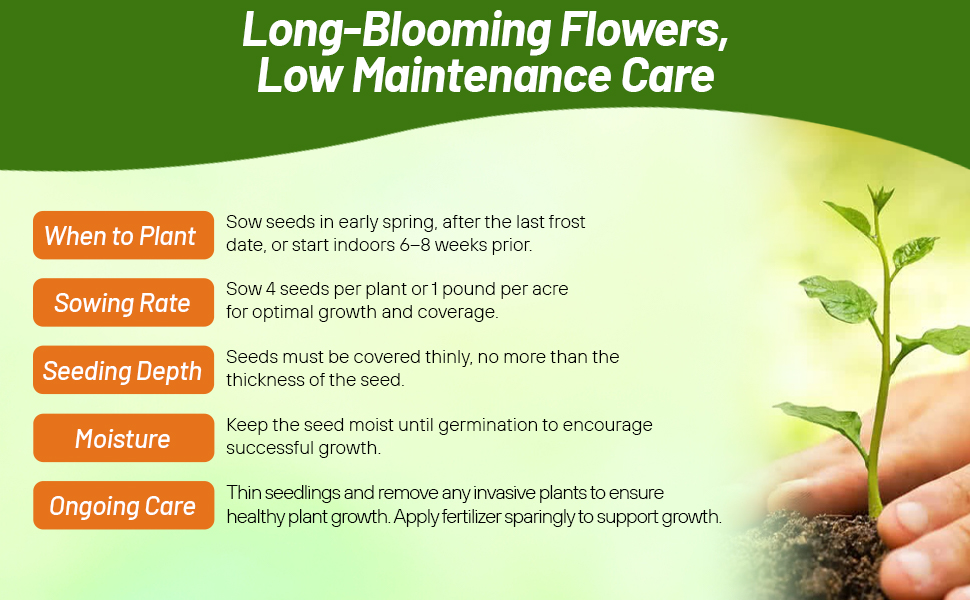
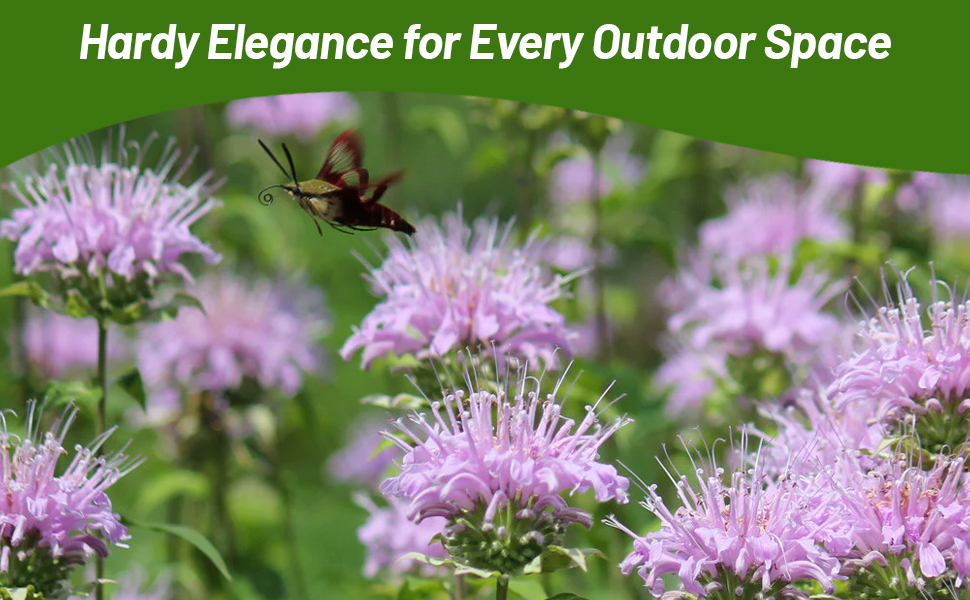
Wild Bergamot (Monarda Fistulosa) - Grow Monarda Fistulosa seeds for this attractive and useful perennial herb plant. Also known as Mint Leaf Bee Balm this perennial is an upright growing plant which spreads out. It has a lovely lavender blossom and distinctively aromatic foliage. Its sweet nectar is a favorite of butterflies, bees and hummingbirds. Wild Bergamot is native to eastern North America and the plains, and it is easy to grow from flower seeds and it multiplies quickly.
Common Questions
Will monarda attract pollinators to my garden?
Monarda are loved by butterflies, hummingbirds as well as beneficial pollinators.
Will deer eat my plants?
No, the monarda plant is resistant to deer and rabbits.
Do I need to deadhead my flowers?
To encourage more blooms, you will need to deadhead your flowers.
Should I divide my plants?
Yes, plants should be divided every three years.
When do I prune my monarda plants?
A yearly light pruning can be done if you want to keep your plants bushy. Pinch off the tips of the stems in the spring. In fall cut plants down to a few inches for healthy new spring growth.
Planting Directions
TEMPERATURE
60 - 70F
AVERAGE GERM TIME
10 - 30 days
LIGHT REQUIRED
Yes
DEPTH
1/16 inch
SOWING RATE
Plant this wildflower seed at 3 pounds per acre
MOISTURE
Keep seed moist until germination
PLANT SPACING
18 inches
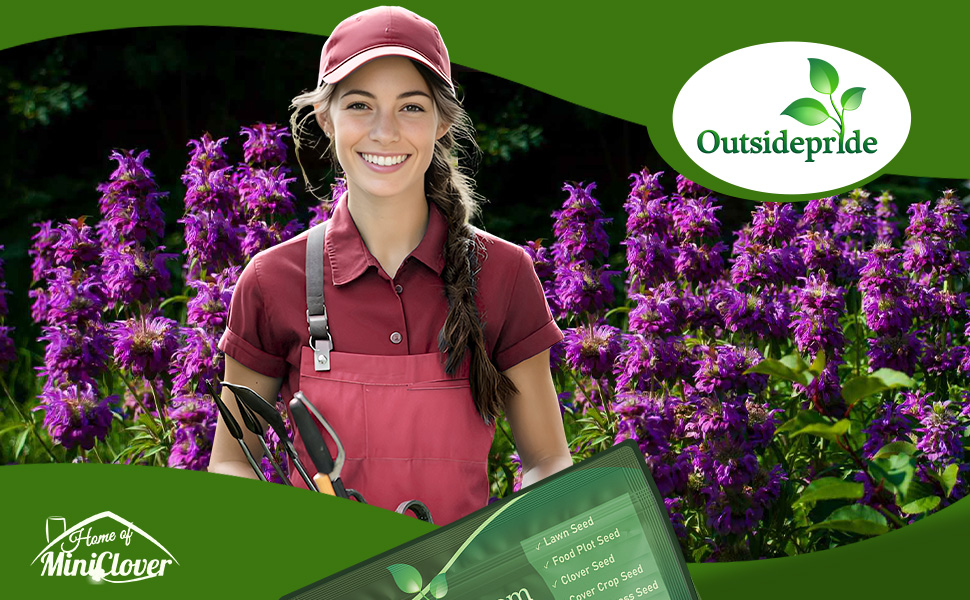
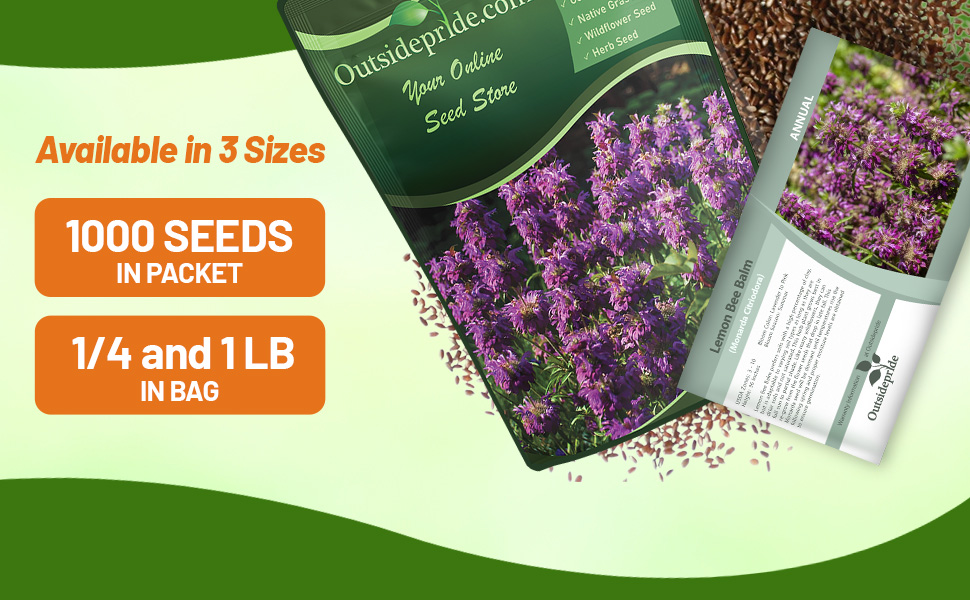
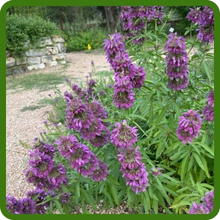
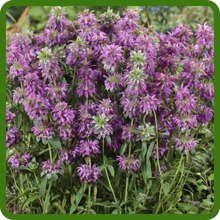
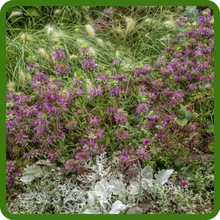
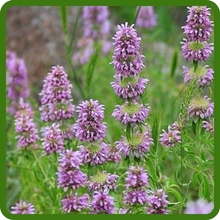
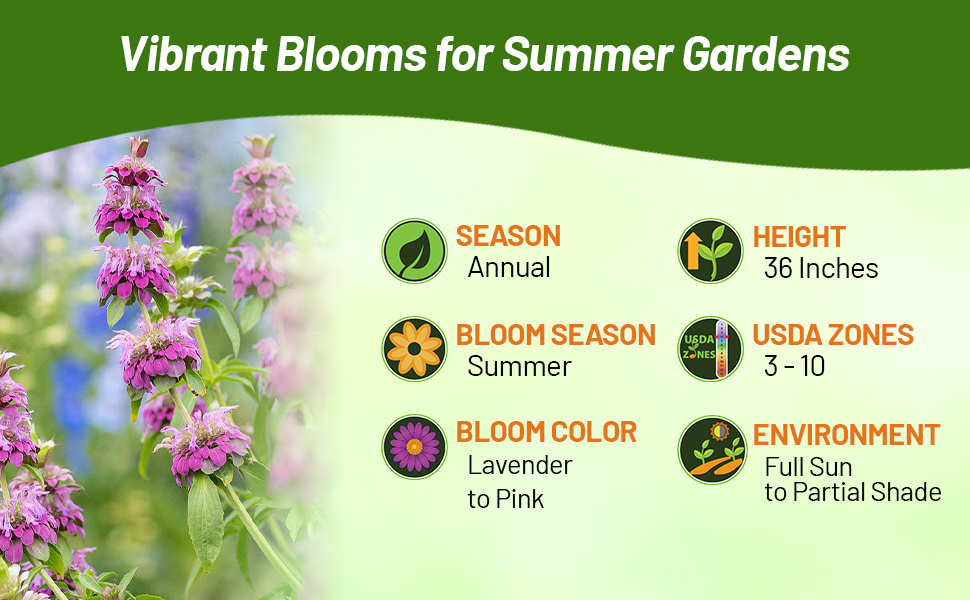
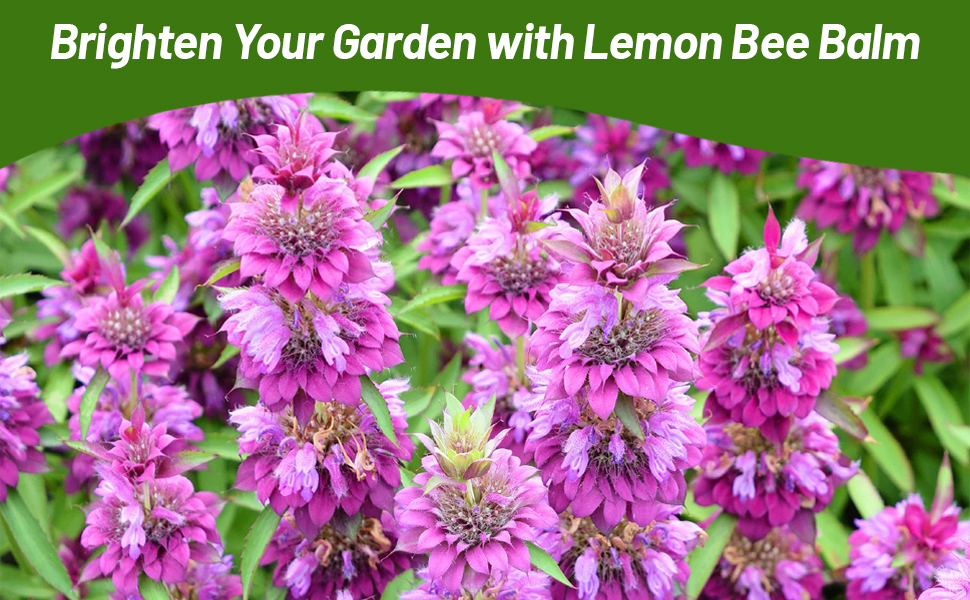
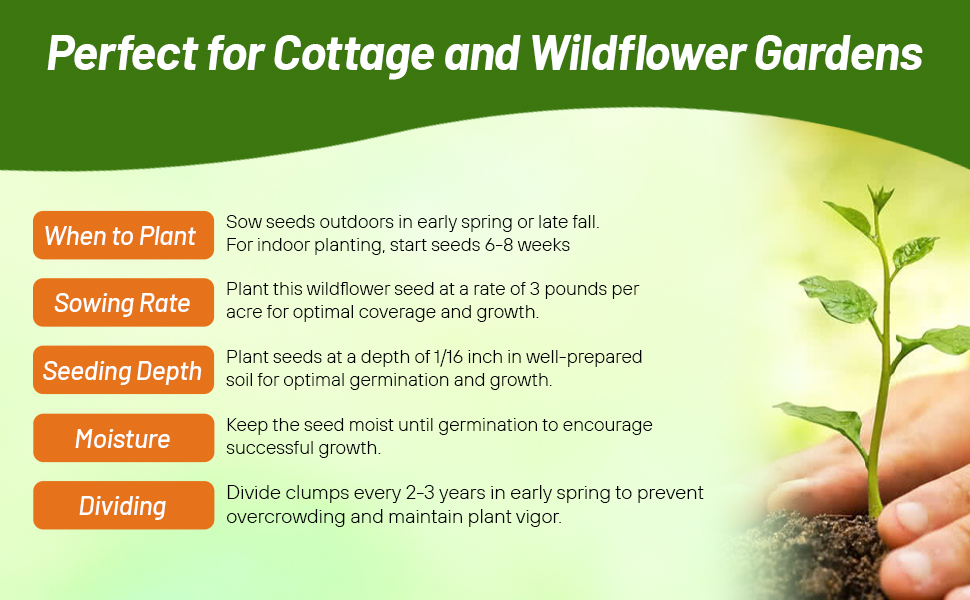
Lemon Bee Balm (Monarda Citriodora) - Start these flower seeds for a wonderful annual that attracts beneficial insects. Commonly called Lemon Bee Balm, Lemon Mint, or Purple Horsemint, this annual, as the name suggests, is an herb in the mint family. Lavender-to-pink, tuft-like, whorled flower heads attract hummingbirds, bees and butterflies. The Lemon Mint herb plant blooms from spring into late summer. Often late in the season the scent is described as resembling oregano more than lemon.
Common Questions
Will monarda attract pollinators to my garden?
Monarda are loved by butterflies, hummingbirds as well as beneficial pollinators.
Will deer eat my plants?
No, the monarda plant is resistant to deer and rabbits.
Do I need to deadhead my flowers?
To encourage more blooms, you will need to deadhead your flowers.
Should I divide my plants?
Yes, plants should be divided every three years.
When do I prune my monarda plants?
A yearly light pruning can be done if you want to keep your plants bushy. Pinch off the tips of the stems in the spring. In fall cut plants down to a few inches for healthy new spring growth.
Planting Directions
TEMPERATURE
68F
AVERAGE GERM TIME
14 - 21 days
LIGHT REQUIRED
Yes
DEPTH
Seeds must be covered thinly, no more than the thickness of the seed
SOWING RATE
4 seeds per plant
MOISTURE
Keep seed moist until germination
PLANT SPACING
30 inches
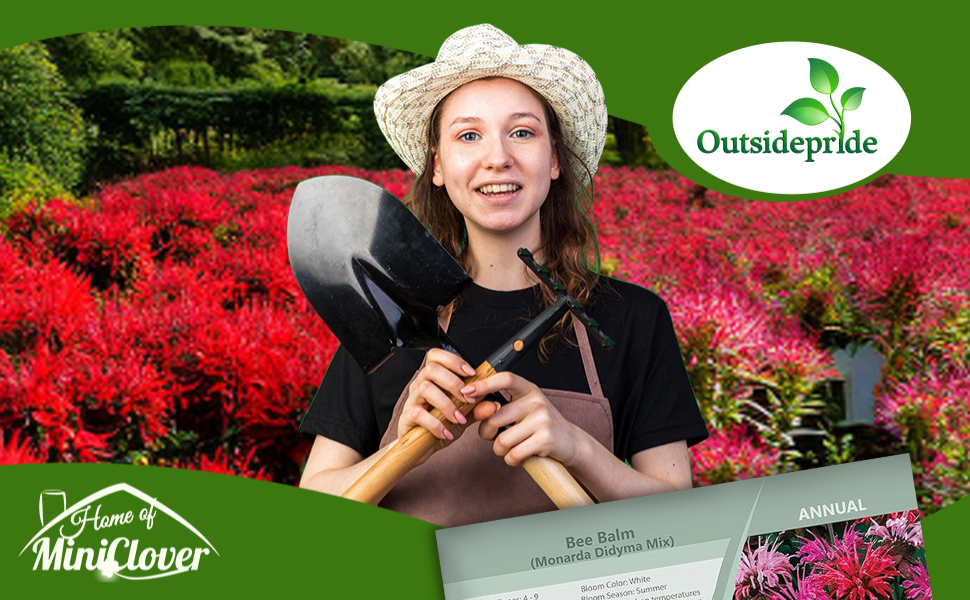
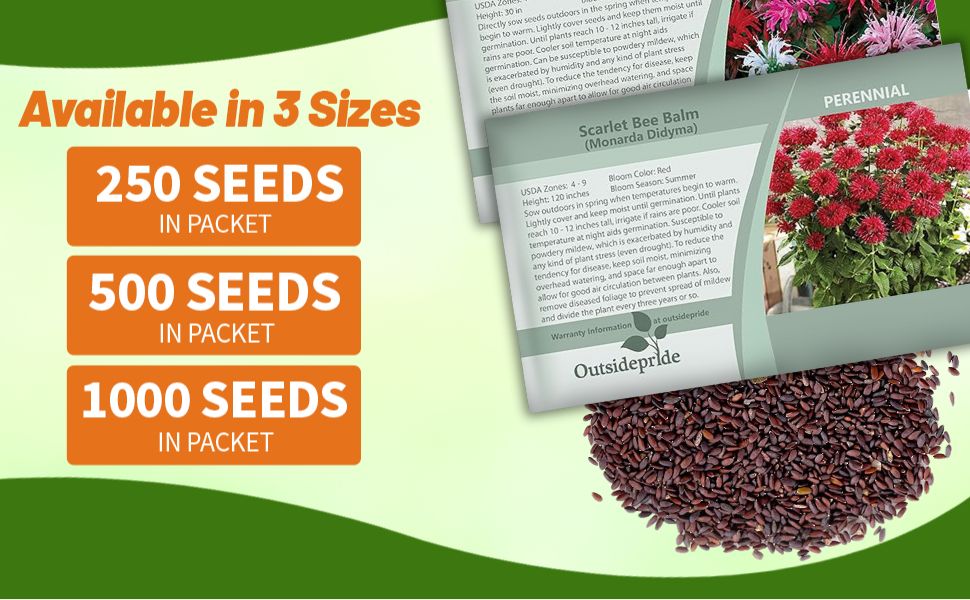
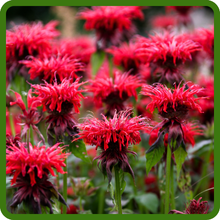
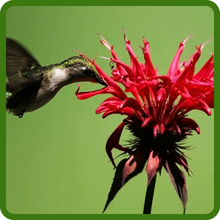
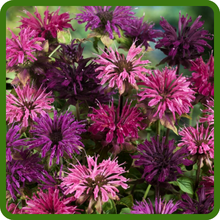
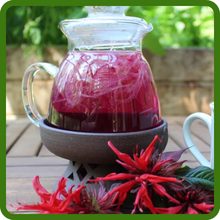
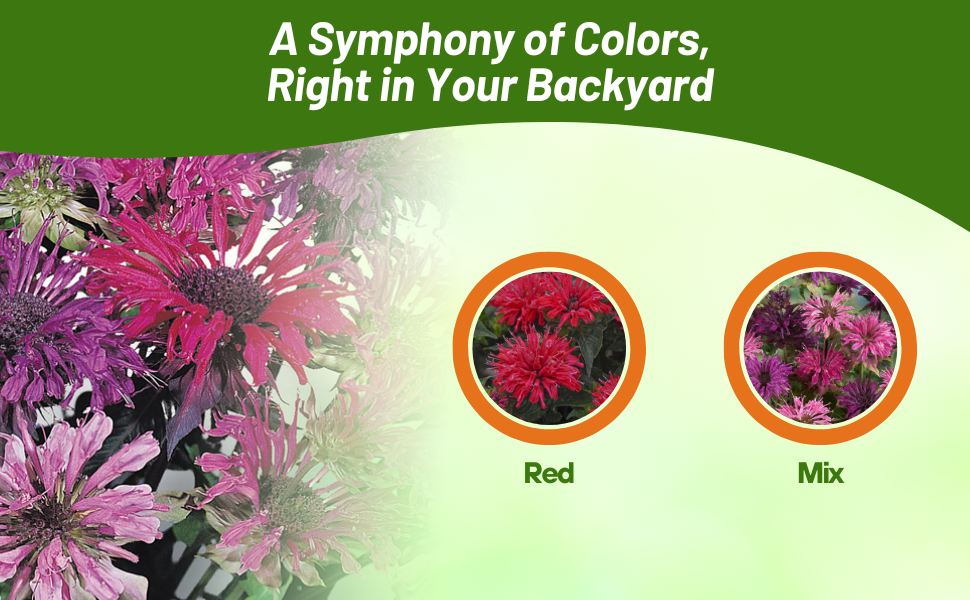
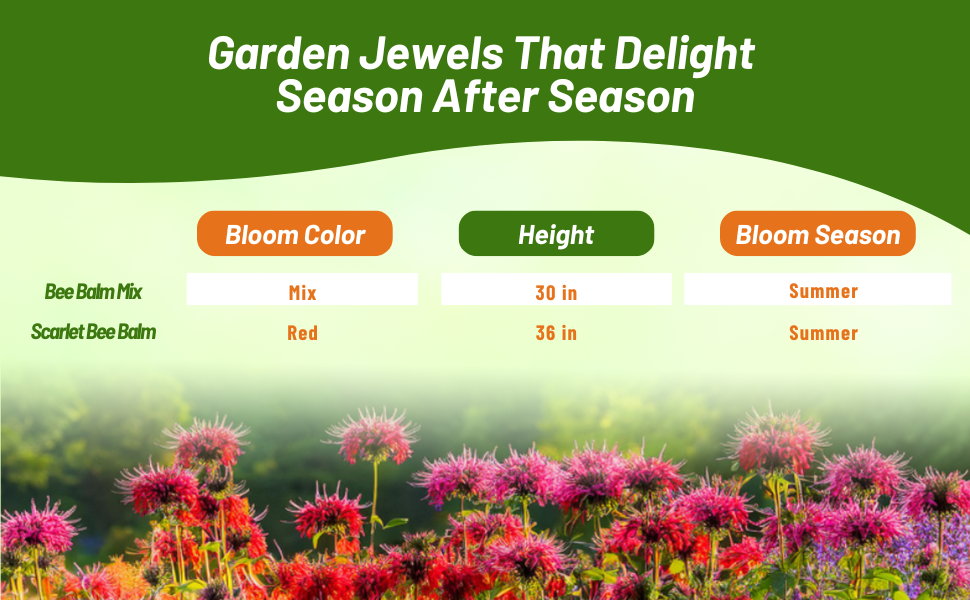
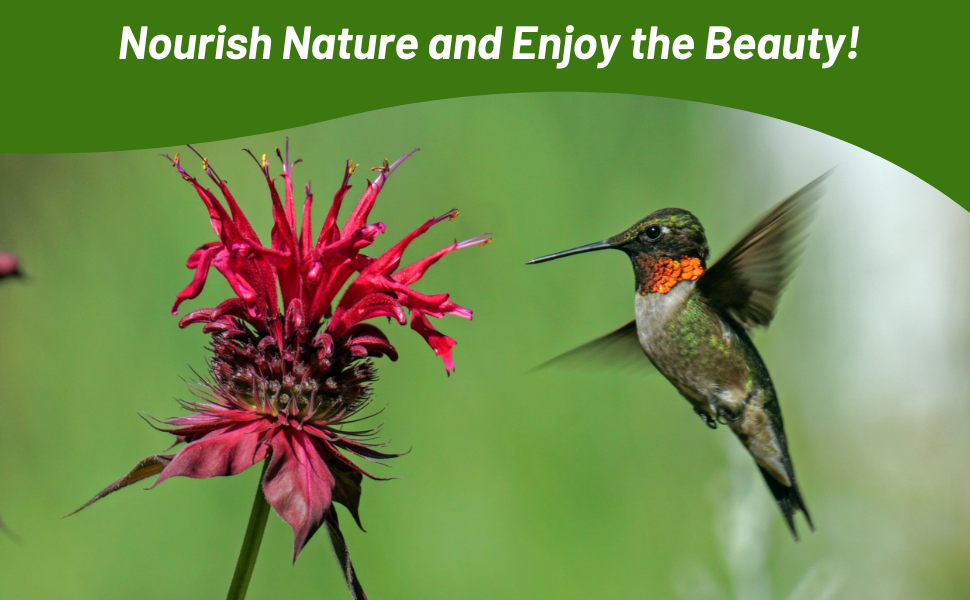
Bee Balm (Monarda Didyma Mix) - Bee Balm is popular in flower and herb gardens because it is easy to establish from Monarda seeds and nothing brings in the butterflies, hummingbirds, and bees like Monarda flowers. This beautiful mix of colors is very showy and will have everyone turning their heads. Medicinal uses Bee Balm is antimicrobial and often times made into tea. It can be used to treat colds, the flu, indigestion, bloating, and nausea.
Common Questions
Will monarda attract pollinators to my garden?
Monarda are loved by butterflies, hummingbirds as well as beneficial pollinators.
Will deer eat my plants?
No, the monarda plant is resistant to deer and rabbits.
Do I need to deadhead my flowers?
To encourage more blooms, you will need to deadhead your flowers.
Should I divide my plants?
Yes, plants should be divided every three years.
When do I prune my monarda plants?
A yearly light pruning can be done if you want to keep your plants bushy. Pinch off the tips of the stems in the spring. In fall cut plants down to a few inches for healthy new spring growth.
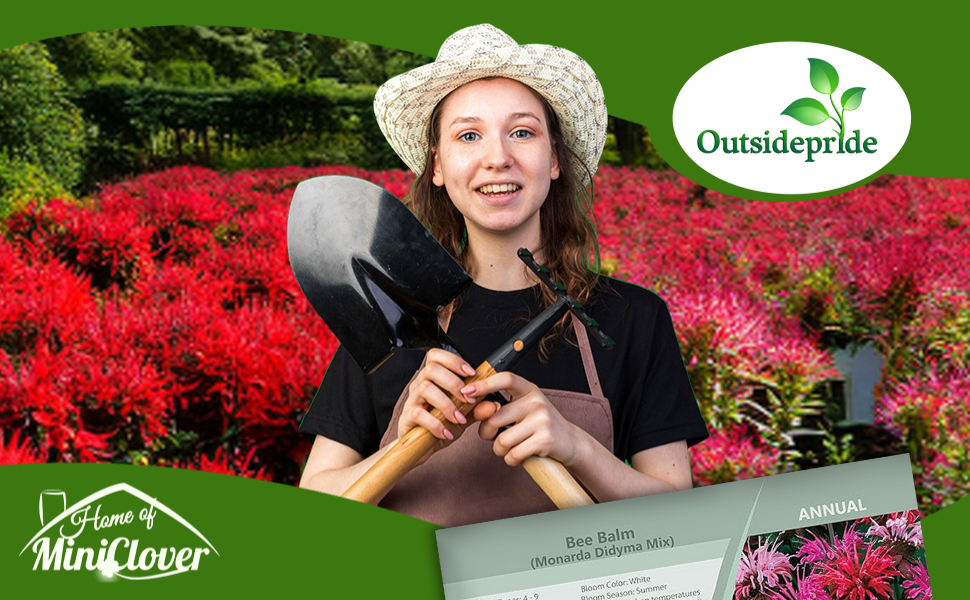
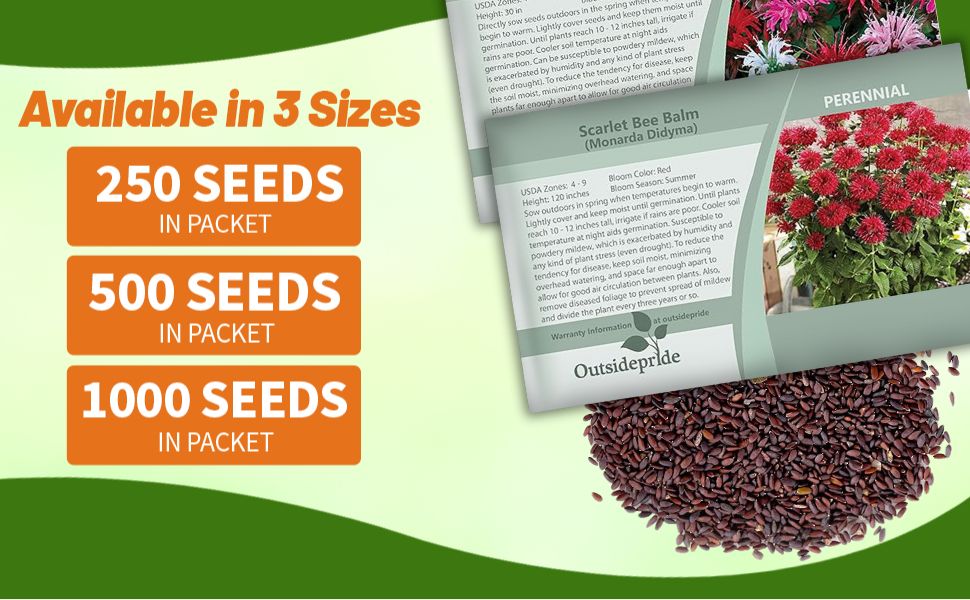
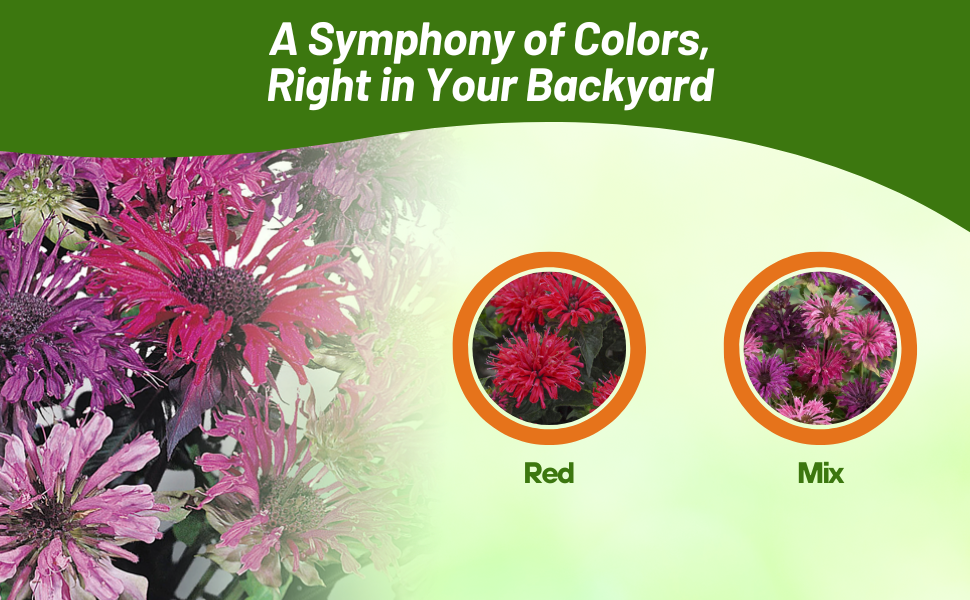
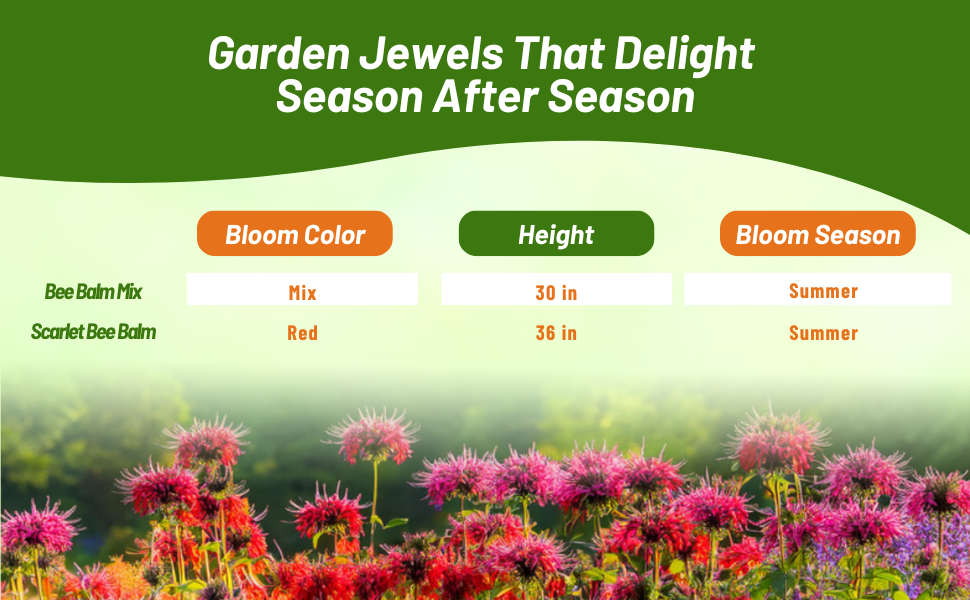
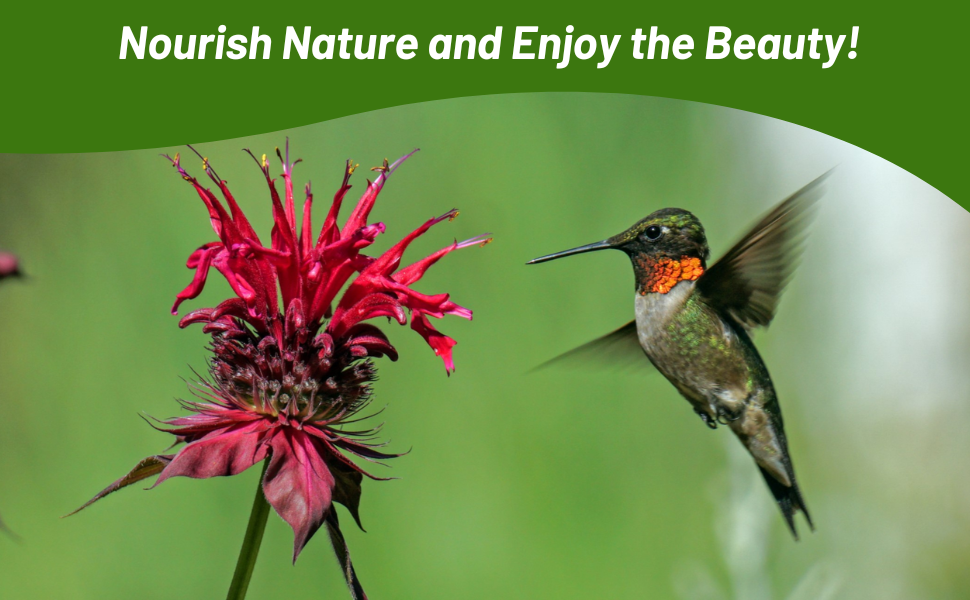
Scarlet Bee Balm (Monarda Didyma) - Scarlet Bee Balm is popular in flower gardens because it is easy to establish from Monarda Didyma seeds and nothing brings in the butterflies, hummingbirds, and bees like Monarda flowers. Monarda Didyma is a perennial herb known as Bergamot, Scarlet Monarda, Oswego Tea and Crimson Beebalm.
Common Questions
Will monarda attract pollinators to my garden?
Monarda are loved by butterflies, hummingbirds as well as beneficial pollinators.
Will deer eat my plants?
No, the monarda plant is resistant to deer and rabbits.
Do I need to deadhead my flowers?
To encourage more blooms, you will need to deadhead your flowers.
Should I divide my plants?
Yes, plants should be divided every three years.
When do I prune my monarda plants?
A yearly light pruning can be done if you want to keep your plants bushy. Pinch off the tips of the stems in the spring. In fall cut plants down to a few inches for healthy new spring growth.
Planting Directions
TEMPERATURE
68F
AVERAGE GERM TIME
14 - 21 days
LIGHT REQUIRED
Yes
DEPTH
Seeds must be covered thinly, no more than the thickness of the seed
SOWING RATE
3 - 4 seeds per plant
MOISTURE
Keep seeds moist until germination
PLANT SPACING
24 inches
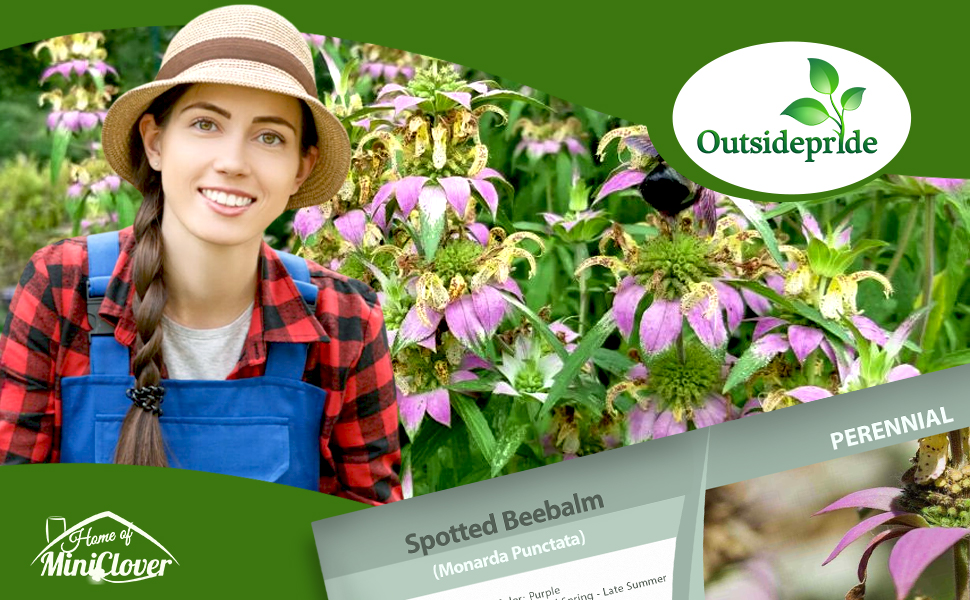
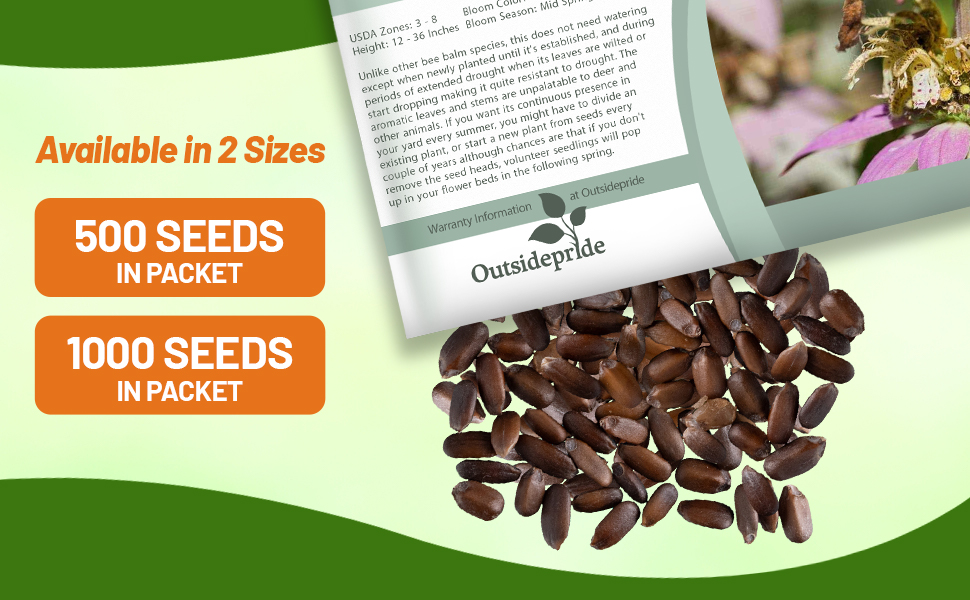
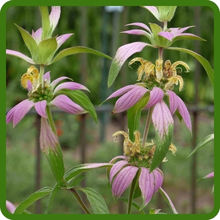
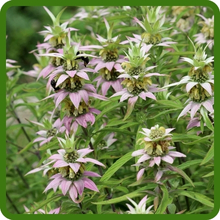
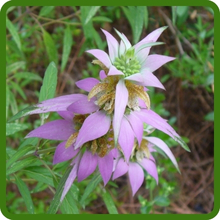
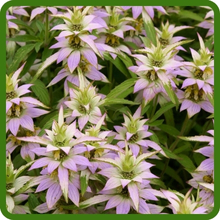
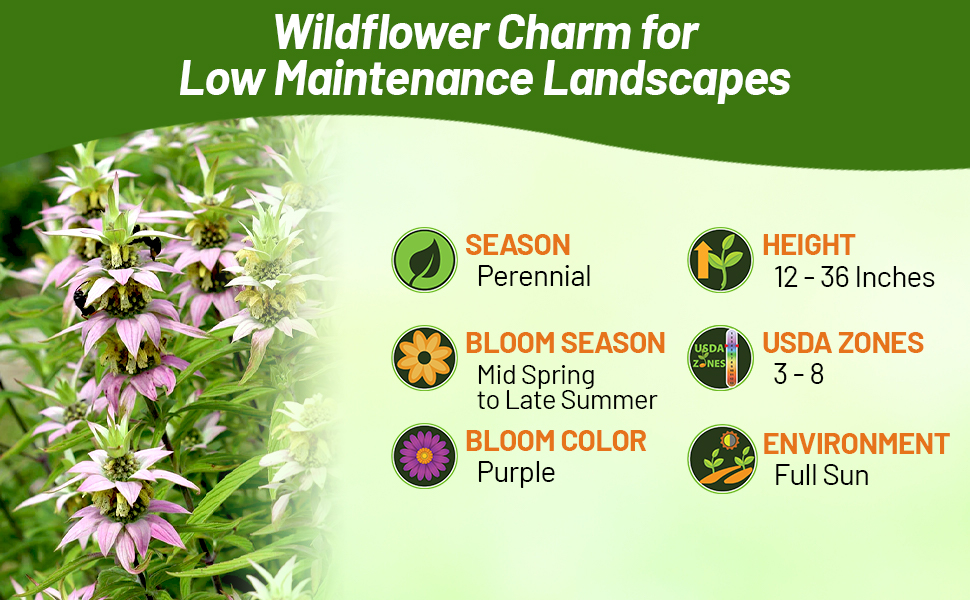
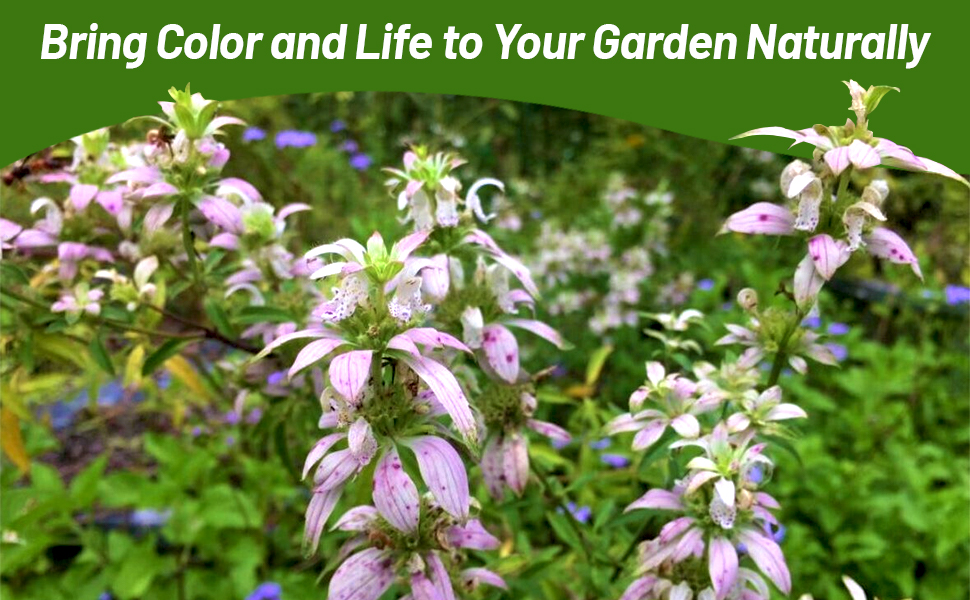
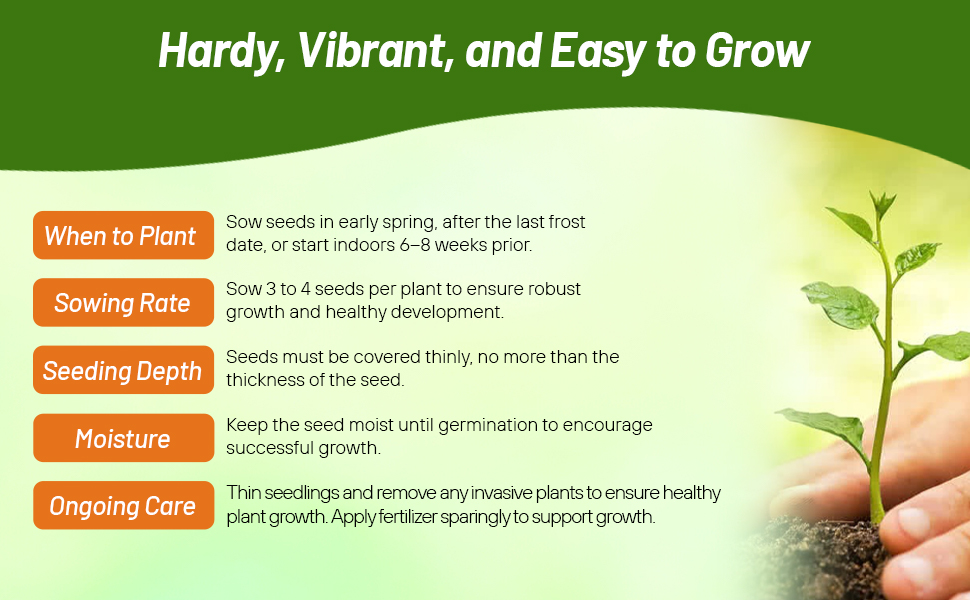
Spotted Beebalm (Monarda Punctata) - Also referred to as horsemint, is a native perennial to the Eastern U.S. and typically occurs in full sun areas with dry soil in prairies, sandy areas, rocky woodlands, and coastal plains. It is a clump-forming, mint family member which typically grows 1 to 3 feet tall and is considered to be drought tolerant. Although native to the Eastern U.S., plants do well in the following states: LA , AR , CA , CT , DC , DE , FL , GA , IA , IL , IN , KS , KY , LA , MA , MD, MI , MN , MO , MS , NC , NJ , NM , NY , OH , OK , PA , SC , TN , TX , VA , VT.
Spotted Beebalm makes excellent cut flowers. Remove spent flowers to improve plant appearance and possibly to prolong bloom. The plants spreads by runners to form large clumps, but is not considered to be too aggressive. Monarda is considered to be a pollinator magnent attacting bees, butterflies, moths, and hummingbirds. Pollinators flock to the blooms in sunny prairie-like settings or in gardens with sandy well drained soils. Because of its showy blooms, these wonderful plants are often used in cottage gardens. It is hard to find plants that are deer resistant, drought tolerant, and low maintenance; however, that is exactly what Spotted Beebalm is.
Unlike other bee balm species, spotted bee balm does not need watering except when newly planted until it’s established, and during periods of extended drought when its leaves are wilted or start dropping making it quite resistant to drought. The aromatic leaves and stems are unpalatable to deer and other animals. Even though it is considered to be a perennial plant, it usually is short-lived. If you want its continuous presence in your yard every summer, you might have to divide an existing plant, or start a new plant from seeds every couple of years although chances are that if you don’t remove the seed heads, volunteer seedlings will pop up in your flower beds in the following spring.
So why is it also called Horsemint? The plants have been used medicinally for horses as well as humans. For this reason they are sometimes called spotted horsemint or dotted horsemint.
Common Questions
Will monarda attract pollinators to my garden?
Monarda are loved by butterflies, hummingbirds as well as beneficial pollinators.
Will deer eat my plants?
No, the monarda plant is resistant to deer and rabbits.
Do I need to deadhead my flowers?
To encourage more blooms, you will need to deadhead your flowers.
Should I divide my plants?
Yes, plants should be divided every three years.
When do I prune my monarda plants?
A yearly light pruning can be done if you want to keep your plants bushy. Pinch off the tips of the stems in the spring. In fall cut plants down to a few inches for healthy new spring growth.

































